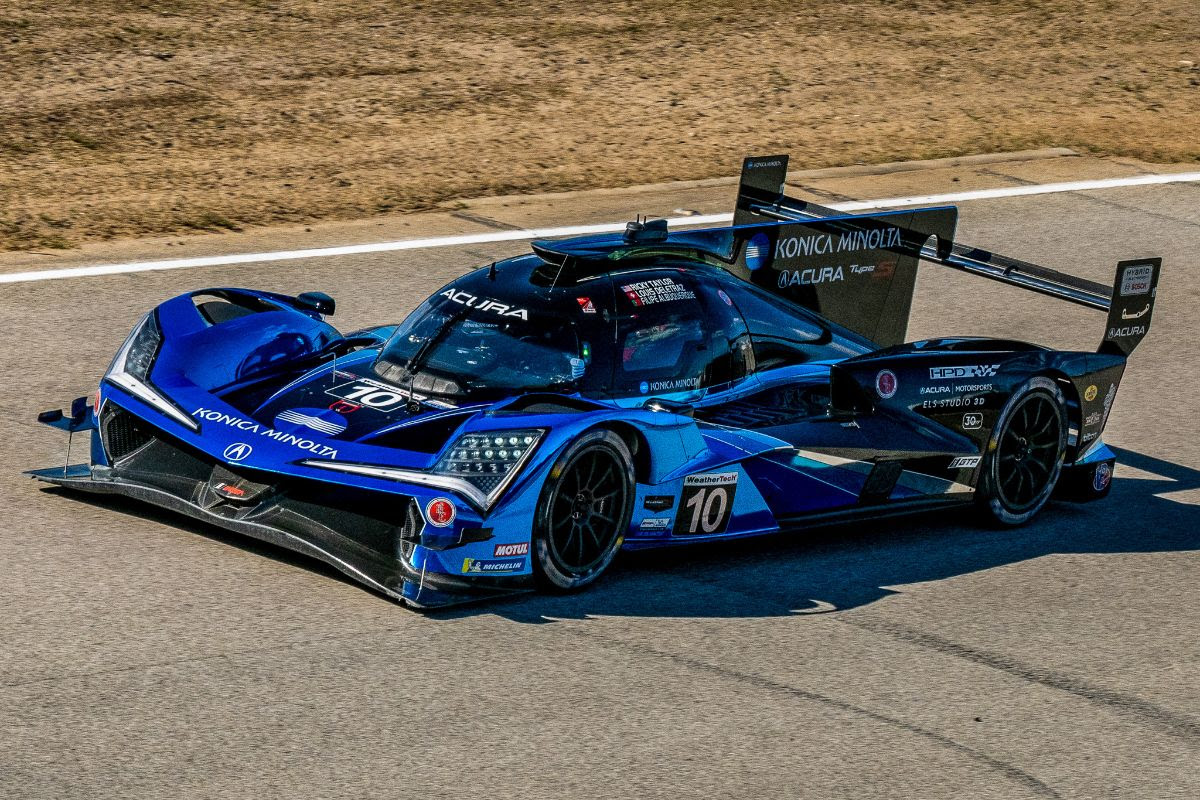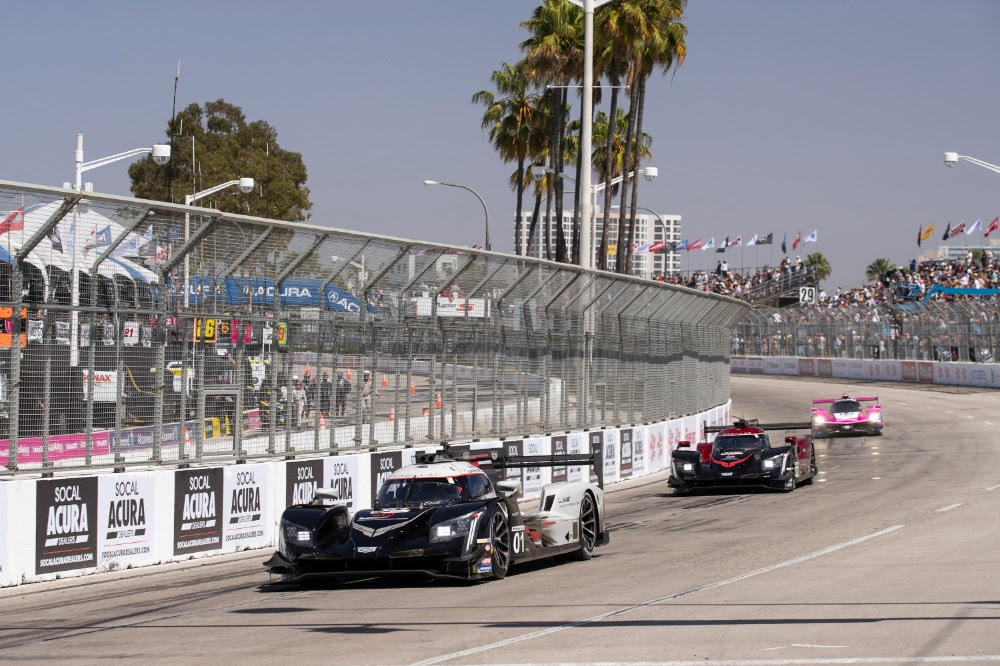Transcript: Championship leader discusses his outlook for the sprint race on street circuit
Pipo Derani, co-driver with Alexander Sims of the No. 31 Whelen Engineering Cadillac V-Series.R in the Grand Touring Prototype class of the IMSA WeatherTech SportsCar Championship, met with the media via Zoom conference to preview the April 14-15 race in Long Beach, California.
Derani and Sims, along with Jack Aitken, co-drove to victory March 18 in the Mobil 1 Twelve Hours of Sebring. Derani co-drove to victory at Long Beach in 2021 for Cadillac Racing, which has won every IMSA prototype race at Long Beach since the start of the DPi era in 2017.
Q&A with Derani transcript:
You’ve had previous success at Long Beach. What is it going to take for you and Alex (Sims) to do it again?
“Looking forward to going back to Long Beach. It’s one of those race events that you’re always looking forward to – the first street track of the year. Excited to see how the new GTP cars are going to go around that track in particular. Felipe (Nasr) and I had the chance to win it together in 2021 in a very commanding way. Felipe put it on pole, and I got it from the lead and we just kept increasing until the cheered flag. Nice way to win. It’s one of those races where qualifying matters more than others because it’s just hard to pass like any other street track. Getting there with a win already under our belts this season, a pole position and the championship lead, but we’re going to attack the weekend the same way as if we had not won the last race or were not leading the championship. It’s still early days; we know how long this championship is and every point counts. Every point counts and attacking is the name of the game. We’re going to try to put it on pole again, of course, and make our lives a little bit easier for the race. If you put it on pole in Long Beach, it makes your life a lot easier.”
With no LMP2 or LMP3 cars at Long Beach, does that make it easier because you’re likely to have a better handle on the drivers in the other cars?
“That really depends because sometimes despite being the quicker car you don’t quite know if the guy has seen you and sometimes you think he hasn’t seen you and then he blocks. I think it depends on the moment you’re in the race. Sometimes in the beginning it makes no sense, you make life easy. But later in the race when GTs might be fighting for their own race and we’re trying to overtake, multi-class racing can bring you this sort of situation and you have to deal with it as you go. Sometimes you have a pretty clean race and straightforward in that regard from our side of things and sometimes you have to be a bit more on the aggressive side and make sure that you get by so you don’t get overtaken by the car behind. It’s like a chess game with the GTs while you’re trying to do your own race. In general, over the last year, we have seen quite an improvement in that area from both sides. I think the GTs are a lot better and easier to deal with because you also have the pro guys inside. Going into Long Beach, the GT cars, especially at the end of the race where the pros will be finishing the race, should be more straightforward if we cooperate with each other.”
What are your anticipations about passing for position between the GTP cars within the tight confines of Long Beach?
“There are expectations for great racing and therefore if the cars are really running close to each other, especially at a place like Long Beach, you expect to have to muscle your way around some of your competition to try and have an edge. That’s all good for the sport. Long Beach being one of our shorter races that we have all year makes for a different dynamic, so everyone coming from a long race like Sebring has to quickly switch and go for a completely different strategy in order to achieve a good result. Therefore, a little bit of argy bargy is necessary. I think tight racing and competition like that brings more fans, which is what we need, and the more we have the more success everyone will have. GTP cars are a bit bigger than DPis, so muscling your way around will be a little bit trickier than it was before.”
How does the tire situation and the short duration of the race affect the overall strategy?
“I think that depends on how the weekend evolves. It’s the kind of thing that you see as you go. If you start up front, it’s definitely going to be one way. If you’re on the back, you might want to gamble a bit. It really depends car by car as well because one car might react differently to the tires than the other depending on setup. We also have different chassis, so that has an influence. We’re still all learning the cars. There are so many things we wish we knew already, but we don’t and tire is one of them. So, we have to see as we go. I’m hoping that it’s an easy decision instead of trying to make something out of the blue. I would like for it to be a simple decision instead of a gamble.”







